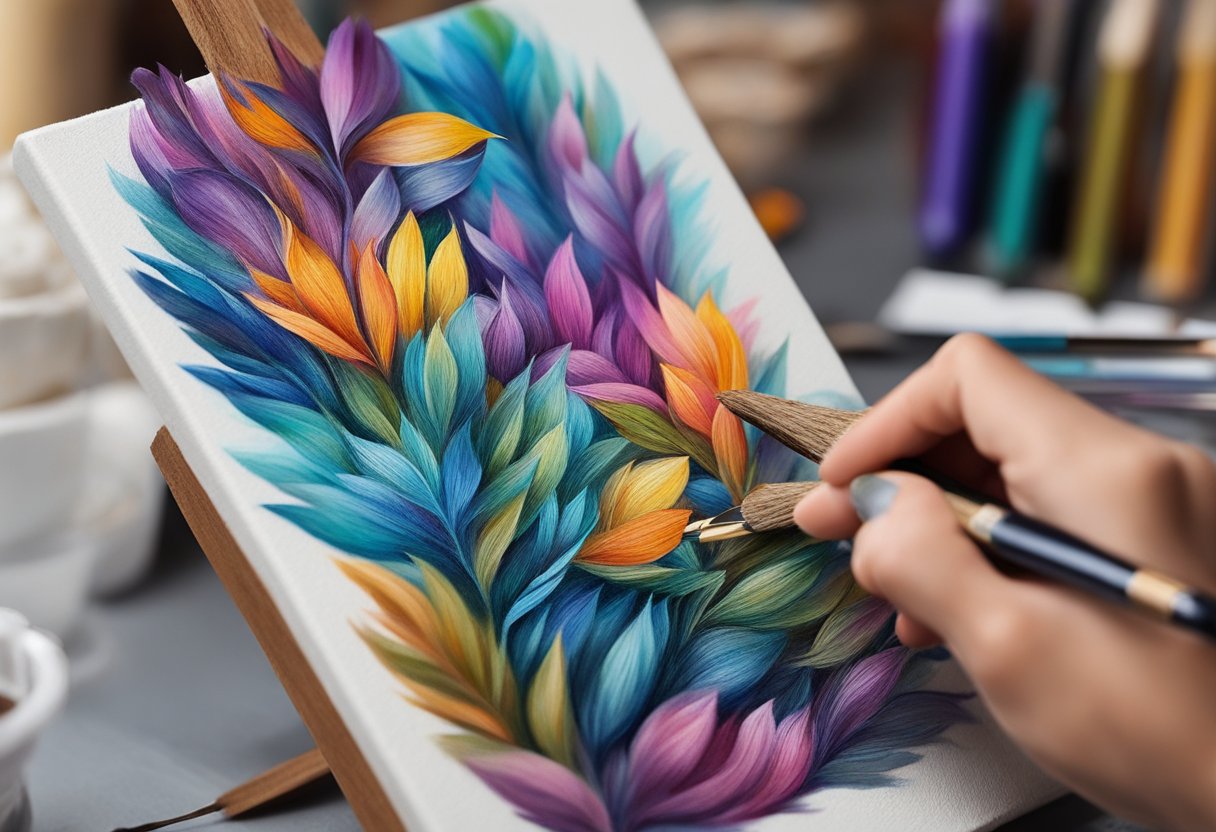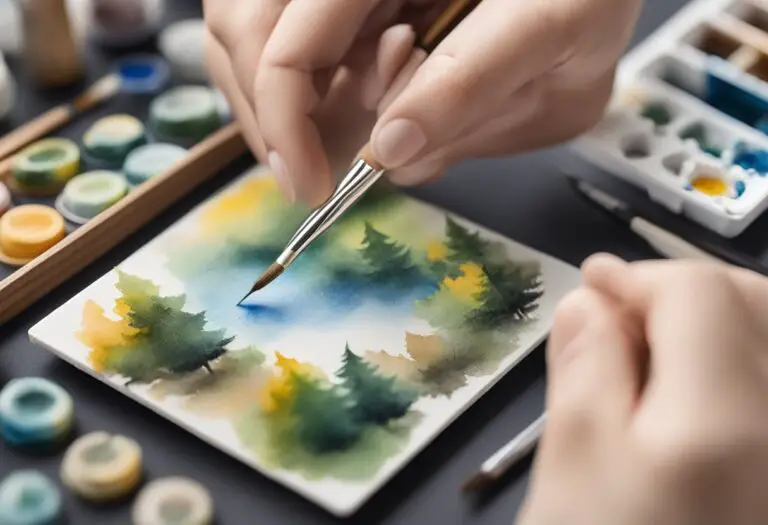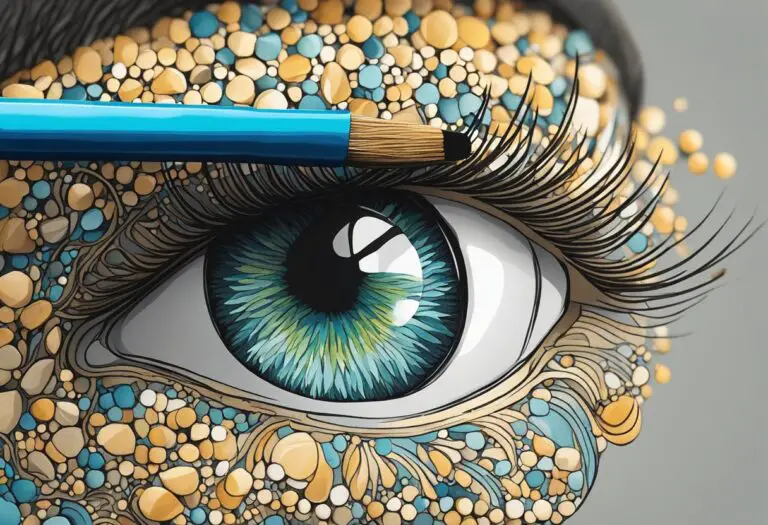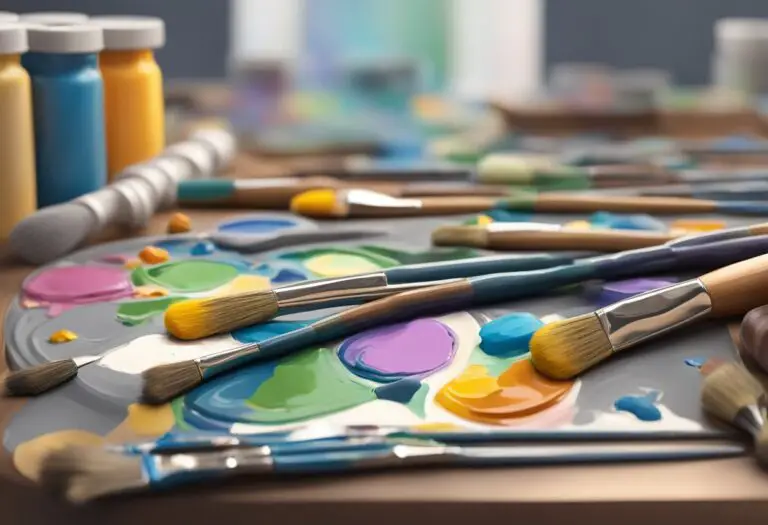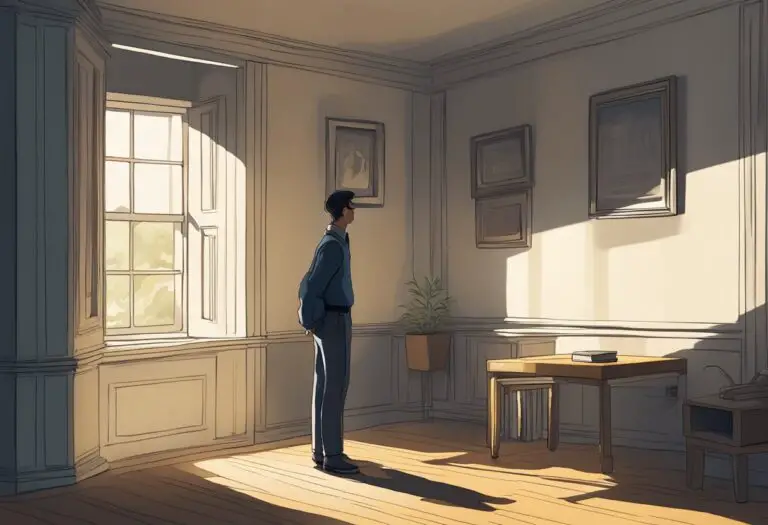Dry brushing technique for Miniature Painting
Are you ready to take your miniature painting skills to the next level? Unleash the potential of your artworks with the fascinating dry brushing technique. This time-tested method has proven to be a game-changer for miniature painting enthusiasts, offering a unique way to elevate details and create captivating textures.
Curious to know how this technique can enhance the beauty of your miniature masterpieces? Let’s dive into the art of dry brushing and discover the secrets behind achieving stunning results!
Understanding the Dry Brushing Technique
In this section, we delve into the fundamentals of the dry brushing technique and explore the benefits it offers for miniature painting. Dry brushing is a versatile and widely used method that involves using a dry brush with minimal paint to create controlled and subtle highlights.
One of the key advantages of the dry brushing technique is its ability to enhance the finest details of a miniature artwork. By using a brush with most of the paint removed, artists can achieve precise highlighting on raised surfaces, edges, and textures. This technique allows for greater control and finesse, enabling artists to add dimension and depth to their work.
Moreover, dry brushing lends a unique and realistic texture to miniature paintings. The dry brush glides gently over the surface, selectively depositing paint on the raised areas while leaving recessed areas almost untouched. This creates the illusion of texture and brings the artwork to life.
Besides improving the overall aesthetics of a miniature painting, the dry brushing technique also offers other benefits. It is a time-efficient approach, as it requires minimal paint and allows for quick application and drying. Additionally, dry brushing conserves paint, making it an economical choice for artists.
When executed skillfully, dry brushing can produce stunning results, elevating miniature paintings to new levels of intricacy and detail. It is a technique that requires practice and finesse, but with dedication and the right tools, artists can master the art of dry brushing and unlock its full potential.
Mastering the Dry Brushing Process

Dry brushing is a technique that requires precision and practice. To achieve the desired results in miniature painting, it’s essential to master the dry brushing process. This step-by-step guide will walk you through the necessary steps to effectively execute this technique and enhance the details of your miniature artworks.
Selection and Preparation of the Dry Brush
The first step in the dry brushing process is selecting the right brush. It’s important to choose a brush with stiff bristles that can hold the paint but is not overly saturated. The brush should be dry, and any excess paint should be removed before starting.
| Type of Brush | Suitable for |
|---|---|
| Synthetic Brushes | Small areas and fine details |
| Natural Brushes | Larger areas and textured surfaces |
Once you have selected the appropriate brush, prepare it by gently tapping it on a tissue or cloth to remove any excess paint. This will ensure that the brush is dry and will give you better control over the application.
Proper Application and Blending Techniques
Now that you have your dry brush prepared, it’s time to apply the paint to your miniature artwork. Remember to use a minimal amount of paint on the brush to achieve the desired effect. Too much paint can result in a messy application and may not create the subtle highlights you are aiming for.
- Using gentle and controlled strokes, apply the dry brush to the raised areas or edges of your miniature. This will create highlights and enhance the details of the piece.
- For blending, you can gently feather the brush strokes over the surface to create a seamless transition between colors and tones. This technique will add depth and dimension to your artwork.
- Take breaks and step back periodically to assess your progress and make adjustments as needed. This will help you achieve the desired outcome.
Remember, practice makes perfect when it comes to dry brushing. Experiment with different brushes, paints, and techniques to find what works best for your miniature painting style. Over time, you’ll become more proficient in the process and achieve stunning results.
Achieving Realistic Textures with Dry Brushing
In the world of miniature painting, creating realistic textures is essential for bringing artwork to life. One powerful technique that can help achieve stunning results is dry brushing. By utilizing the benefits of dry brushing, artists can add detailed textures and depth to their miniature paintings, whether it’s replicating the softness of fur or the ruggedness of weathered surfaces.
Dry brushing involves using a minimally loaded brush, often with just a small amount of paint applied. This allows the artist to control the amount of pigment being deposited onto the surface, resulting in a subtle and nuanced effect. The technique is particularly effective in creating textures by enhancing the raised surfaces of a miniature painting.
When employing dry brushing to create detailed textures, artists can experiment with various techniques and approaches. For example, to replicate the look of fur, the artist can use a stiff-bristled brush and lightly sweep it across the surface, focusing on the raised areas. This technique captures the essence of fur by mimicking its natural texture and creating the illusion of depth.
Another technique for achieving intricate textures is by creating wood grain. Using a brush with longer bristles and a gentle touch, the artist can carefully move the brush in the direction of the grain, emphasizing the natural patterns found in wood. By gradually layering the dry brush strokes, the artist can create a convincing wood texture that adds realism and dimension to the miniature painting.
For those aiming to create weathered surfaces, such as aged stone or rusted metal, dry brushing can be an effective tool. By lightly brushing over the raised areas of the surface with a dry brush, the artist can highlight the worn and weathered parts, giving the impression of age and decay. This technique adds a sense of authenticity to the miniature painting and enhances its overall visual impact.
To showcase the various techniques and effects that can be achieved through dry brushing, the table below provides a visual representation:
| Texture Technique | Brush Type | Application Method |
|---|---|---|
| Fur | Stiff-bristled brush | Light sweeping motion on raised areas |
| Wood Grain | Brush with longer bristles | Brushing in the direction of the grain |
| Weathered Surfaces | Dry brush | Light brush strokes on raised areas |
By mastering the art of dry brushing, artists can elevate their miniature paintings with highly detailed textures. The technique offers a versatile approach for replicating various materials and surfaces, enhancing the overall realism and visual appeal of the artwork.
Enhancing Highlights with Dry Brushing
When it comes to creating captivating miniature paintings, mastering the dry brushing technique is essential. This skill allows artists to enhance highlights and add depth to their artworks, bringing them to life. By understanding the principles of light and shadow and employing specific brushstrokes, miniature painters can achieve stunning effects that make their subjects truly stand out.
One of the key benefits of the dry brushing technique is its ability to create controlled highlights. Unlike traditional painting techniques where the brush is loaded with paint, dry brushing involves using minimal paint on a dry brush. This allows for precise application on raised areas, such as the edges of a figure or the texture of a surface. The result is a subtle highlight that adds dimension and realism to the artwork.
To achieve this effect, artists can follow a few simple steps. First, select a suitable brush with relatively stiff bristles that can hold a small amount of paint. Then, dip the brush lightly into the paint and remove any excess by wiping it on a paper towel or palette. The brush should appear almost dry, with just a hint of color. Next, using gentle, repetitive strokes, apply the brush to the desired areas of the miniature. Focus on the raised surfaces, edges, and contours, where light naturally hits. By gradually building up the highlight with additional brushstrokes, artists can control the intensity and create a seamless transition between light and shadow.
It’s important to note that dry brushing is a technique that requires practice and experimentation. By varying the pressure, speed, and direction of the brushstrokes, artists can achieve different effects and tailor the highlights to their artistic vision. Additionally, artists should consider the color of the paint they use for dry brushing, as it can greatly influence the final result. Lighter colors tend to create more noticeable highlights, while darker colors can produce subtle shadows and depth.
Examples of Enhancing Highlights with Dry Brushing
To further illustrate the effectiveness of the dry brushing technique in enhancing highlights, consider the following examples:
| Miniature Painting | Before Dry Brushing | After Dry Brushing |
|---|---|---|
| Heroic Fantasy Warrior | ||
| Futuristic Sci-Fi Robot |
As seen in the examples above, dry brushing has the power to transform a miniature painting by adding highlights that bring out the intricate details. The technique can be applied to a wide range of subjects, from fantastical creatures to futuristic machinery, allowing artists to truly showcase their skills and creativity.
By incorporating the dry brushing technique into their repertoire, miniature painters can elevate their artworks to new heights. The controlled highlights created through this technique add depth, dimension, and a sense of realism to their miniature masterpieces. Whether it’s a heroic warrior or an otherworldly creature, the subtle nuances brought about by dry brushing highlight the intricate details that make each piece unique and captivating.
Exploring Other Uses of Dry Brushing
Besides its application in miniature painting, the dry brushing technique has found a following among skincare enthusiasts for its exfoliating and circulation-boosting benefits. Dry brushing for the skin has gained popularity as a natural and rejuvenating self-care practice.
Dry brushing involves using a coarse, dry brush to gently massage the skin in upward strokes. The bristles of the brush help slough off dead skin cells, promoting a smoother and brighter complexion. This technique also stimulates blood circulation, which can contribute to a healthier glow and improved overall skin health.
By promoting lymphatic drainage, dry brushing may also aid in reducing the appearance of cellulite. While it is important to note that dry brushing alone may not eliminate cellulite entirely, consistent practice coupled with a healthy lifestyle can potentially contribute to the reduction of its visibility.
Moreover, the dry brushing technique can help improve the effectiveness of moisturizers or body oils. By exfoliating the skin before applying skincare products, dry brushing allows for better absorption, ensuring that your skin receives maximum benefits.
Incorporating dry brushing into your skincare routine can be a self-care ritual that revitalizes both your skin and senses. However, it is important to prioritize skin health and avoid overexfoliating. Engage in gentle, circular motions, and always follow up with a moisturizer to keep the skin hydrated.
Debunking Dry Brushing Myths
Despite its popularity, there are several myths and misconceptions surrounding the practice of dry brushing. Let’s separate fact from fiction and explore the actual benefits of dry brushing for the skin.
Myth: Dry brushing can effectively reduce cellulite
There is a common belief that dry brushing can eliminate cellulite. While dry brushing may temporarily improve the appearance of cellulite by stimulating blood flow and promoting lymphatic drainage, it does not provide a long-term solution. Cellulite is a complex condition influenced by factors such as genetics, hormones, and lifestyle habits. Dry brushing alone is unlikely to completely eliminate cellulite.
Benefits of Dry Brushing for the Skin
While cellulite reduction may be a misconception, dry brushing does offer various benefits for the skin. Let’s explore the true advantages of incorporating this technique into your skincare routine:
- Exfoliation: Dry brushing helps to exfoliate the skin by gently removing dead cells and unclogging pores. This can result in smoother, softer skin and a more radiant complexion.
- Stimulating blood circulation: The act of dry brushing stimulates blood flow to the skin’s surface, which can promote a healthier complexion and improved skin tone.
- Enhancing lymphatic drainage: Dry brushing can aid in the removal of toxins and waste products from the body by stimulating the lymphatic system. This can contribute to a reduction in puffiness and the appearance of swelling in certain areas.
- Aiding in the absorption of skincare products: By exfoliating the skin and promoting blood circulation, dry brushing can enhance the absorption of skincare products, allowing them to penetrate more deeply for maximum efficacy.
While these benefits may be appealing, it’s important to note that individual results may vary. It’s always recommended to consult with a skincare professional or dermatologist before incorporating any new skincare technique into your routine.
| Dry Brushing Benefits | Dry Brushing for Cellulite |
|---|---|
| Exfoliates the skin, removing dead cells | May temporarily improve the appearance of cellulite |
| Stimulates blood circulation for a healthier complexion | Does not provide a long-term solution for cellulite reduction |
| Aids in lymphatic drainage and reduction of puffiness | Results may vary depending on individual factors |
| Enhances absorption of skincare products | Consult with a skincare professional before incorporating into routine |
Choosing the Right Dry Brushing Tool
When it comes to practicing the dry brushing technique for miniature painting, selecting the right dry brushing tool is crucial. The right brush can make a significant difference in achieving the desired effects and textures in your artwork. Here, we will explore the different types of dry brushing tools available and their respective benefits.
Horsehair Brushes
Horsehair brushes are a popular choice for dry brushing. They are made from soft, natural horsehair bristles that provide excellent control and precision. Horsehair brushes are ideal for creating delicate highlights and fine details in your miniature paintings. Their gentle bristles allow for subtle layering and blending, resulting in realistic textures.
Synthetic Brushes
If you prefer a more affordable and durable option, synthetic brushes are worth considering. These brushes are typically made from synthetic bristles, such as nylon or polyester. They offer versatility and can be used for a range of dry brushing techniques. Synthetic brushes are known for their resilience and ability to withstand repeated use, making them a reliable choice for artists.
Fan Brushes
Fan brushes are another type of dry brushing tool that can yield unique effects. These brushes have bristles shaped like a fan, allowing for broad strokes and the creation of soft textures. Fan brushes are excellent for quickly adding highlights or producing foliage-like effects in your miniature paintings. They can also be used to create subtle transitions between colors.
Stencil Brushes
If you want to experiment with different textures and patterns, stencil brushes can be an excellent addition to your dry brushing toolkit. These brushes have short, stiff bristles that are ideal for creating controlled and precise strokes. Stencil brushes are often used to add detailed textures, such as scales or weathered surfaces, to miniature artworks.
When selecting the right dry brushing tool for your needs, keep in mind the specific painting style you want to achieve and the desired effects. Consider the length and stiffness of the bristles, as well as the overall size and shape of the brush. By choosing the appropriate brush for each project, you can enhance your miniature paintings and bring them to life with realistic textures and highlights.
Adding Dry Brushing to Your Miniature Painting Toolkit
Now that you have familiarized yourself with the dry brushing technique and its benefits, it’s time to incorporate this valuable skill into your miniature painting toolkit. By following these practical tips, you can improve your technique, refine your skills, and maintain your dry brushes for optimal performance.
1. Practice, Practice, Practice
Like any other painting technique, mastering dry brushing requires practice. Dedicate some time to experimenting with different brush strokes, pressure levels, and paint consistencies. This will allow you to perfect your control and create the desired highlights and textures.
2. Refine Your Skills with Miniature Projects
Working on small-scale projects, such as miniature figures or detailed dioramas, is an excellent way to refine your dry brushing skills. The intricate details and limited surface area of miniatures will challenge you to be precise and deliberate with your brushstrokes, resulting in stunning miniature artworks.
3. Select the Right Brushes
Investing in high-quality dry brushes specifically designed for miniature painting is essential. Look for brushes with soft, natural bristles that are ideal for picking up and depositing small amounts of paint. Consider having a range of brush sizes to ensure versatility in your painting projects.
4. Proper Brush Care
To maintain your dry brushes and extend their lifespan, it’s crucial to clean them properly after each painting session. Rinse your brushes with lukewarm water and mild soap, gently removing any residual paint. Avoid using harsh chemicals or leaving your brushes submerged in water for extended periods. Once cleaned, reshape the bristles and allow them to dry naturally.
5. Experiment with Colors and Textures
Don’t be afraid to experiment with different paint colors and textures when applying the dry brushing technique. Try layering multiple colors to create depth and dimension, or mix in some texture mediums to enhance the realism of your miniature artworks. Get creative and explore the endless possibilities this technique offers.
By adding the dry brushing technique to your miniature painting toolkit, you’ll unlock a world of possibilities to elevate your artworks. With practice, the right tools, and a passion for exploration, you can enhance your miniature paintings with stunning highlights and realistic textures.
Conclusion
In conclusion, the dry brushing technique is a valuable skill for miniature painting enthusiasts. By using a dry brush with minimal paint, artists can create controlled highlights and realistic textures in their artworks. The step-by-step guide provided in this article offers a practical approach to mastering the technique and achieving desired effects.
Through dry brushing, artists can enhance the highlights in their miniature paintings, adding depth and dimension to their artwork. It is also worth noting that the technique is not limited to miniature painting alone. Dry brushing can be applied to exfoliate the skin and improve blood circulation, offering additional benefits beyond the art world.
To incorporate dry brushing into your toolkit, it is essential to select the right type of brush for your painting style and desired effects. Regular practice and proper care of your dry brushes will also ensure longevity and optimal performance. By exploring and experimenting with this versatile technique, you can elevate your painting skills and create stunning miniature artworks.

